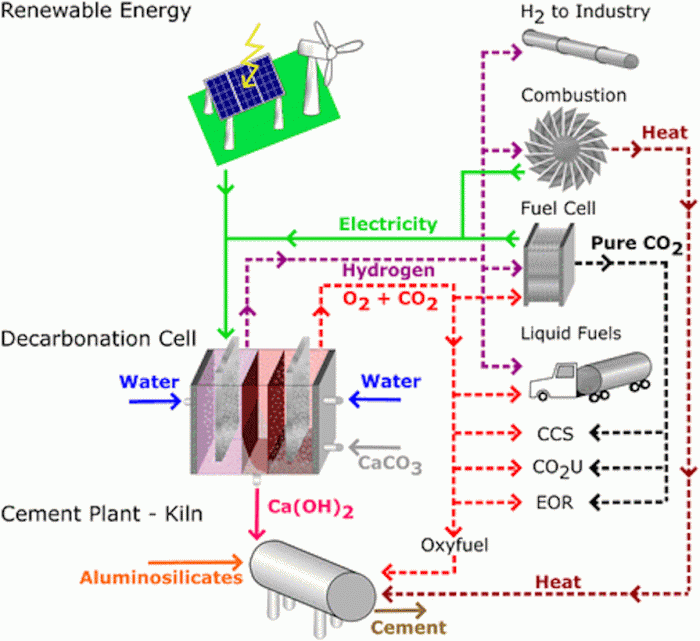According to MIT professor of Materials Science and Engineering, Yet-Ming Chiang the cement production process leads to high carbon dioxide emissions which are set to grow over the next few years.
“About 1 kilogram of carbon dioxide is released for every kilogram of cement made today. That adds up to 3 to 4 gigatons (billions of tons) of cement, and carbon dioxide emissions, produced annually today, and that amount is projected to grow,” he says.
Chiang and his team reported these findings in a paper published in the journal Proceedings of the National Academy of Sciences of the United States of America (PNAS). From their investigation. From their investigation, the team have come up with a new way to eliminate carbon emissions released from manufacturing cement as a whole.
This electrochemical process could eliminate the current fossil-fuel-dependent system. In this users would substitute the use of fossil fuels for the heating process and instead use electricity generated from clean, renewable sources.
In the centre of the process is the use of an electrolyzer. A simple process where a battery is hooked up to two electrodes and generates an electric current to provide energy that splits a water molecule (H2O) into hydrogen (H2) and oxygen (O2).
In the new process, the dissolved acid carbon dioxide and the solid calcium hydroxide can be processed in another step to produce the cement. According to Chiang the electrolytic hydrogen produced, if combusted, can supply most or all of the thermal energy required in high-temperature sintering of the cement.
“These results suggest a pathway to cost-competitive emission less cement manufacturing wherein all energy is supplied by renewable electricity,” he adds.
In a cost comparison, Chiang and his team estimate that the cost of conventional cement is $91 per ton. Whereas in the electrochemical sequence the costing should be less than $40 per ton.
“This would swing net energy costs in favour of the electrochemical process, in an environment where policies require carbon remediation, and where low-cost renewable electricity is available,” explains Chiang.
Read more:
Plastic-infused concrete could cut cement industry’s carbon emissions








